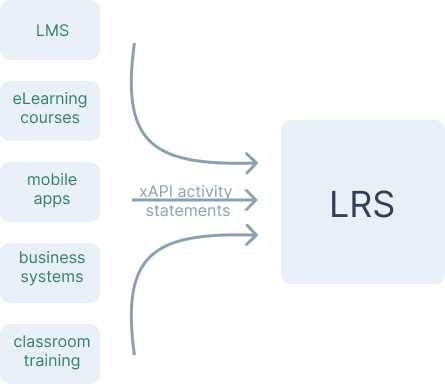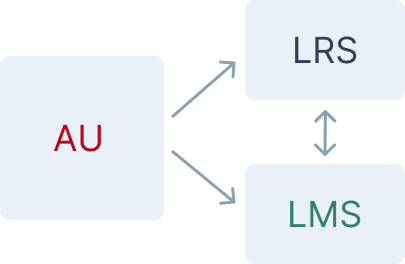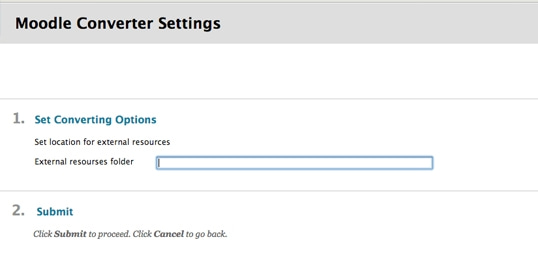If you prioritize compatibility and interoperability of your eLearning product, you save hours both for educators and users and make your product a future-proof investment. The point is to select the right eLearning standards that will reinforce your product. This guide will help you see the difference among the most popular standards (SCORM, LTI, xAPI, cmi5, and its predecessor AICC) and when you need to apply each of them.
How Belitsoft Can Help
We have been working in the eLearning domain since the early 2000s. Here’s how we can use our experience to assist you:
- Content Development. We can create new eLearning content and package it with the format of your choosing.
- Custom eLearning software development. If you want to break into the eLearning market with a great new product, we can provide the technical know-how and capable professionals to help you.
- LXP Consulting & Development. We can share our knowledge of learning experience platforms to guide you along your path to success.
What Are eLearning Standards?
Elearning standards are common guidelines for content, authoring tools, and learning software (LMS, LXP, eLearning applications) that specify how learning content should be created and delivered over various platforms or how those platforms should interoperate.
The need for unified eLearning standards appeared as a reaction to the emergence of dozens of Learning Management Systems on the market. If they only accepted content tailored to their exact specification and couldn´t interact with other software, this would lead to vendor lock-in (dependence) with the corresponding risks and expenses.
Why Do You Need to Apply eLearning Standards?
Compatibility. Suppose you have a course that is hosted on a specific LMS. Eventually, you grow dissatisfied with that system and decide to migrate to another. As your course is SCORM-compliant, it can be transferred to the new LMS in a few clicks. It ensures that the investment in learning resources will pay off as you can move your intellectual capital from one system to the next.
Tracking capabilities. Thanks to eLearning standards, especially xAPI, you can monitor completion rates and speed, and even user activity in learning games and on third-party websites.
Which eLearning Standard Should You Use?
SCENARIO 1:
To gather structured data and effectively track the learning stats from your LMS or LXP, choose an xAPI standard. It can work in conjunction with either cmi5 profile (which is a common practice) or another one of your choice.
SCENARIO 2:
To make your learning content compatible with almost every LMS, LXP, or another learning app on the market, use a SCORM standard. In this case, even if you decide to move to another LMS, your content will be compatible with a new system.
SCENARIO 3:
To plug in new tools and software into your LMS, LXP, or an eLearning app (virtual classroom, live chat, etc), choose an LTI standard as a Consumer. It will act as a connecting tool between your software and external tools and systems. Or select an LTI standard as a Tool Provider to plug yourself into 3rd-party commercial platforms.
As you see, each eLearning standard has its own purposes. They don’t exclude one another and can be applied together. Now, let’s dig deeper to examine what exactly each eLearning standard benefits your LMS and what pros and cons it has.
SCORM
What is SCORM?
SCORM stands for Sharable Content Object Reference Model. The goal of SCORM development was to standardize learning content formats.
This eLearning standard was developed as a solution to the pain point of spending too much time and money on content customization and delivering learning materials across multiple platforms.
Among several SCORM versions, there are two that are still relevant and popular to use: SCORM 1.2 and SCORM 2004.
Both versions are massively supported by authoring tools and LMSs.
However, they have some differences, and it might be useful for you to know them:
- Supported statuses. SCORM 1.2 supports simple lesson statuses “browsed”, “not attempted”, “passed”, “failed”, “incomplete”, and “completed”). SCORM 2004 has two-level statuses: a ‘completion_status’ (completed/incomplete) and ‘success_status’ (passed/failed).
- Reading and writing function. With SCORM 1.2, you have only write interaction, while with SCORM 2004, you can specify the “read” or “write” interaction. For example, a learner answers a question at the beginning (write interaction), so they don’t get one more chance to reply it again (read interaction).
- Sequencing. Compared to SCORM 1.2, SCORM 2004 has improved author’s control over content through sequencing. It provides certain rules defining the order in which learners can access learning content. For example, you can allow learners to save their results and resume learning later.
What can you do with SCORM?
SCORM is a set of technical standards for packaging learning courses into special files that can be read by any SCORM-compliant application.
When you create a learning course and want it to work with a new LMS, you pack it into a SCORM package.
SCORM package is a .zip archive, which contains files in a specific hierarchy.
As a result, you get a cross-platform e-Learning course. Plenty of authoring tools have a SCORM conversion feature.

Advantages of SCORM
✅ Simple content creation. SCORM enables content creation, publication, and playback across multiple platforms even for those users who have no coding skills and at a low cost.
✅ Unified standard of files. SCORM converts out-of-date content into a standard ZIP format.
✅ Massive support by authoring tools and LMSs. SCORM compliance is a must for major tools and systems today, so migrating your learning materials between platforms becomes a no-brainer.
✅ Easy content blending from various sources. SCORM allows mixing content developed by diverse authoring tools or exported from different LMSs.
✅ Tracking and sequencing support. SCORM allows tracking course completion with the time spent. Moreover, it allows you to set rules for how much time learners can spend on a course, or how long learners should remain on a page before they are allowed to go further.
Disadvantages of SCORM
❌ Limited tracking and reporting capabilities. SCORM lacks in-depth analysis of user activity, allowing only limited metrics for tracking (assessment scores, time spent on course, ) and fairly limited reporting on these tracking metrics, meanwhile it still forces that at least basic tracking will be there, while it may not with non-SCORM content.
xAPI (Tin Can API)
What is xAPI?
Experience API (xAPI or Tin Can API) is a new specification for communicating data about learning activities among different systems (not only LMSs).
Most think of xAPI as a SCORM replacement. In reality, their roles and purposes differ. While SCORM serves for content creation and delivery, xAPI is developed to store learning data and transfer it among different learning systems.
What can you do with xAPI?
People interact with learning content and other learners everywhere - both offline and online.
All their actions and activities are recorded and then stored with the help of xAPI. For that, an application or LMS sends secure statements to a Learning Record Store (LRS), which is a part of an xAPI concept that can exist on its own or be a part of an LMS.
An LRS stores all the statements and shares them with other Learning Record Stores. For example, an LRS of your affiliate can share data with your headquarter’s LRS. Learner experiences, accordingly, can be transferred from one LRS (or organization) to another.

Advantages of xAPI
✅ Tracking outside an LMS. When we use xAPI and LRS, it doesn’t restrict tracking learning activities. The advantageous peculiarity of an LRS is that it can be anywhere else on the internet, not necessarily in the same domain as the content, and still capture learning statistics. It communicates data from different systems, allowing tracking a bigger number of e-Learning scenarios.
✅ Support of multiple devices. Tracking starts every time a learner begins learning, no matter which device. xAPI statements can be sent by mobile phones, electronic games, medical devices, hardware simulations, etc.
✅ Recording the majority of learning activities. The structure of xAPI statements supports nouns, verbs, and objects. Such a variety allows the recording of almost any learning activity.
✅ Secure storage of personal data. Learners can store their personal learning information inside specific “personal data lockers” that can be transferred between organizations if needed.
Disadvantages of xAPI
❌ Elaborate metrics setup. As xAPI measures data across multiple learning activities, it requires time to set up the right performance analytics to benefit from the results.
❌ Measuring impact. Some reporting includes basic data that a learner did something. This doesn’t allow making qualitative or quantitative conclusions about the activity impact overall.
Cmi5
What is cmi5?
While xAPI is very powerful and robust, it is also not very specific and restrictive, which makes it very broad and applicable to a large number of eLearning environments with possibility of their own implementations. This is why a more unified and precise specification for xAPI was developed - cmi5 (computer-managed instruction, 5th attempt).
Cmi5 is an xAPI profile that defines how an LMS will communicate with xAPI-powered learning activities, like playing a course in an LMS.
What can you do with cmi5?
With CMI5 you can implement xAPI and be sure that you can broadly incorporate other systems with no additional efforts. Which will help you benefit in terms of broader market possibilities.
“Since the xAPI specification is highly generalized to support many different use cases, a set of “extra rules” (called a “profile”) is needed to ensure interoperability for a given use case. The cmi5 profile ensures plug-and-play interoperability between learning content and LMS systems. The use case that the cmi5 profile is specifically designed for is one where the learner launches the learning content/activity from the LMS user interface,” as the authors of the standard put it.
Cmi5 provides a file with XML metadata that describes a Course Structure as a series of container blocks and Assignable Units (AUs, which are the launchable content of the package).
This file is provided to a cmi5-compatible system (usually, an LMS) for import.

Advantages of cmi5
Well, you have all the advantages of xAPI as cmi5 profile is a specific implementation of xAPI. However, the specific benefit of cmi5 use for xAPI is:
✅ High precision of statements. Cmi5 features precise categories for the statements, usually captured by the Assignable Units. There’s a “cmi5 defined” statement that is specifically designed for capturing session details and core eLearning principles such as pass/fail, content completion, duration, and score. You can group these by the assignable units.
Disadvantages of cmi5
❌ Strict limitations. Compared to the general-purpose xAPI, cmi5 creates restrictions to sift massive amounts of data.
AICC
What is AICC?
AICC stands for Aviation Industry Computer-based Training Committee. The organization created the AICC format to standardize the materials and technology for training airline workers.
AICC file format kept evolving until the organization switched to xAPI. However, some of their xAPI-based work lives on as CMI-5.
What can you do with AICC?
Actually, you can’t do much with it, as most of the industry, and if you are reading this then probably everyone you would be engaging with, has already switched to xAPI+cmi5.
Advantages of AICC
✅ Deployment flexibility. AICC is able to host content on a separate server from your LMS server.
✅ Security. AICC supports highly secure HTTPS data transfers between learning content and an LMS.
Disadvantages of AICC
❌ [Killer] Not supported or updated anymore. It is mostly used in legacy applications, almost no new AICC content is being made. Before dissolving, the organization worked on making its content compliant with a new set of guidelines called Computer Managed Instruction (CMI5);
❌ Limited functionality. It lacks progress tracking capabilities and has limited functionality compared to its more modern counterparts.
❌ Limited compliance. There are still many AICC-compliant systems. However, they frequently lack the necessary features, which means that you need to spend time and money on manual coding to add them.
LTI
What is LTI?
Learning Tools Interoperability (LTI) is a specification that allows you to plug-and-play external learning content, software, tools, etc into your LMS or LXP or your tool/LMS/LXP into an external platform.
With LTI, a learner enters an LMS and selects a resource link to play a learning course. Then, this external resource is seamlessly launched into a remote tool in an iframe (an HTML element that loads another HTML page within the document) or a new browser.
What can you do with LTI?
The LTI tool provider sends to the LMS administrator access data, such as a URL and key.
The LMS admin uploads this data into the LMS.
After that, LMS learners can use a new tool through their LMS interfaces.

Advantages of LTI
✅ Seamless integration. LTI enables seamless tool integration and fast navigation between all the connected tools.
✅ Fast and secure authentication. LTI supports SSO (single sign-on).
✅ Sales channels extension. Tool providers benefit from LTI, because by plugging other tools to your software, more users get acquainted with your product.
✅ New possibilities without budget spending. Consumers can easily enrich the platform with 3rd party tool and not spend hundreds of thousand on elearning development company.
Disadvantages of LTI
❌ Not all LMSs support it. As an example, both Google Classroom and Microsoft Teams - both of which have over 100 million users - do not support LTI.
❌ Mediocre User Experience. As an integrated tool is typically opened in an iframe, working in it restricts the UX of your LMS or app.
❌ No access to all relevant data. LTI integrations don’t cover some helpful LMS features. For example, the LTI standard doesn’t allow an LTI app to communicate with a learner's agenda in their LMS. For that, you need an xAPI.
Recommended posts
Portfolio
Our Clients' Feedback






















.png)
.jpg)
.png)














Belitsoft has been the driving force behind several of our software development projects within the last few years. This company demonstrates high professionalism in their work approach. They have continuously proved to be ready to go the extra mile. We are very happy with Belitsoft, and in a position to strongly recommend them for software development and support as a most reliable and fully transparent partner focused on long term business relationships.
Global Head of Commercial Development L&D at Technicolor